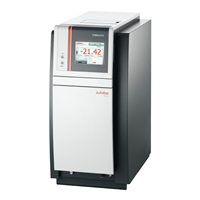PRESTO W40 Series, Liquid Cooling, Heating
Results:
1
Manufacturer
Series
Operating Temperature
Fluid Capacity
Power - Cooling
Weight
Ratings
Flow Rate
Thermal Resistance @ GPM
Product Type
Voltage
Connection Type
Dimensions - Overall
Features
Current
Power Input
Results remaining:1
Applied Filters:
PRESTO W40
About Liquid Cooling, Heating
Thermal liquid cooling encompasses a diverse array of technologies, including heat exchangers, immersion chillers, recirculating chillers, recirculating chiller/heaters, and cold plates, catering to a wide range of power ratings from 22W to 5000W. These systems are designed to manage the transfer of heat within electronic and mechanical equipment by utilizing a liquid coolant. The flow rates of these thermal liquid cooling systems vary significantly, ranging from 0.61 gallons per minute (2.3 liters per minute) to 3.96 gallons per minute (15.0 liters per minute). This wide range allows for flexibility in accommodating different cooling requirements across various applications. Moreover, the thermal resistance of these systems also spans a broad spectrum, from 0.0055°C/W at 2.0 gallons per minute to 0.084°C/W at 1.5 gallons per minute. This variation in thermal resistance provides the capability to tailor the cooling performance based on specific heat dissipation needs and environmental conditions. These thermal liquid cooling solutions are utilized across industries where precise temperature control and efficient heat dissipation are critical. They find applications in cooling high-power electronic components, laser systems, medical equipment, and industrial machinery, among others. In summary, thermal liquid cooling systems encompass a diverse range of technologies designed to manage heat transfer within electronic and mechanical equipment. With varying flow rates and thermal resistance, these solutions offer flexibility and precision in addressing the cooling needs of different applications, contributing to the reliability and optimal performance of critical systems.

